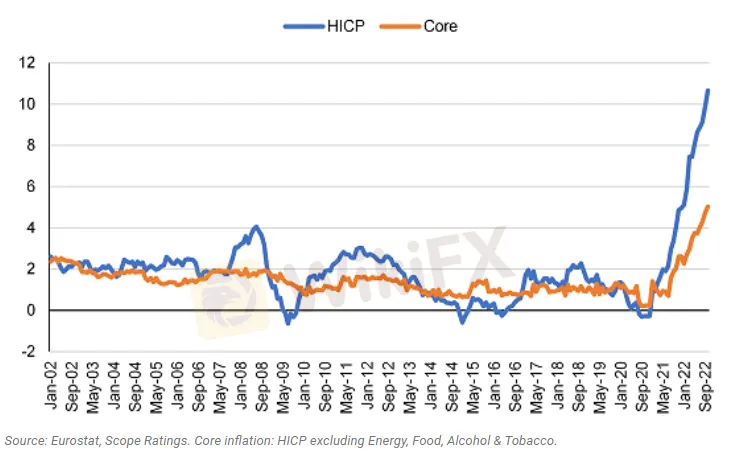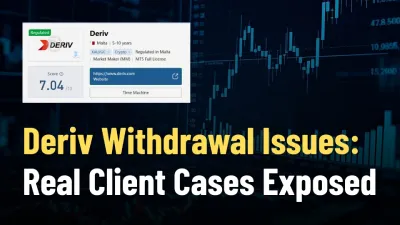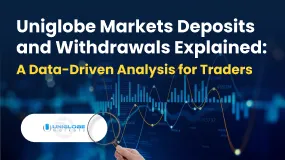简体中文
繁體中文
English
Pусский
日本語
ภาษาไทย
Tiếng Việt
Bahasa Indonesia
Español
हिन्दी
Filippiiniläinen
Français
Deutsch
Português
Türkçe
한국어
العربية
Euro Area: Higher, Flatter Yield Curve Intensifies Debt Sustainability Challenge in Coming Years
Abstract:Euro area governments will have to adjust budgets for higher interest expenses as the ECB tries to contain inflation, underlying need for growth-boosting reforms to help sustain elevated public debt.

This year‘s supply-side and terms-of-trade shocks will ensure inflation runs well above the ECB’s 2% target in 2023-24, resulting in further interest-rate increases as the ECB attempts to defend its inflation-fighting credentials. The resulting higher budgetary costs, together with the weak economic outlook, will prevent the large euro area economies – Germany, France, Italy and Spain – from significantly reducing debt next year, with debt-to-GDP ratios remaining close to their 2022 levels.
The ECB‘s large-scale government bond purchases over recent years had assured the sustainability of public debt in the euro area while helping the central bank’s efforts to increase inflation to 2% after many years of below-target performance. Now, these objectives are colliding. The need to tame accelerating inflation has forced the ECB, along with most central banks, to increase interest rates.
Figure 1. Euro area inflation
%-change, YoY

ECB Actions Increase Borrowing Costs for Governments, Increase Recession Risk
The scale of future ECB interest-rate increases will depend on the inflation outlook, the evolution of the economy, including higher recession risks, as well as the monetary policy of peer central banks, most crucially the Federal Reserve. The new high inflation environment will test the ECBs independence and ability to stabilise prices without igniting a sovereign debt crisis.
However, if monetary policy is to bring overall euro area inflation down to 2%, it will likely require a significant reduction in overall demand, particularly since inflation is driven by mostly supply factors – not higher growth and rising wages. The ECB is unlikely to hit its 2% target without quantitative tightening, that is, the reduction of the stock of government bonds on its balance sheet.
The question remains of the degree to which high inflation, which has accelerated since the end of 2021 (Figure 1), is driven by transitory or permanent factors.
Multiple trends support the view that inflation may be higher for longer, at least above 2% well into 2023-24. These include pandemic-driven supply-side changes and disruptions, uncertainty over trade policies and growing regional rather than global trade, in addition to structural shifts in the energy market, the impact of the green transition, rising wages and implications of a prolonged war in Ukraine.
Headline Inflation Rate May Well Fall in 2023-24
Conversely, factors that are at least to some degree transitory, such as higher energy and food prices, contributed a combined 6.7pps to the annual HICP inflation of 9.9% in the euro area in September. Adding transport costs, which are highly correlated with energy prices, contributed another 1.6pps. These three categories accounted for around 84% of overall inflation. Headline inflation is likely to come down over 2023-24 as energy prices stabilise due to market forces or government intervention, and as higher interest rates start slowing down economic activity.
Still, the longer some of these transitory factors last, the more they feed into higher core inflation, hence the need for further rises in interest rates to lower demand. Following this path, the ECB risks causing a more severe economic downturn in 2023, and in addition, higher funding costs for governments. This will challenge euro area governments efforts to stabilise public debt and may increase the pressure on the ECB to slow down, and eventually halt, its rate hikes.
Pressure Mounts for Economic Reforms to Help Sustain Public Debt
It is worth remembering the ECBs determination not just to maintain price stability but also to avoid fragmentation in the transmission of monetary policy by keeping government bond spreads within certain undisclosed thresholds. A trade-off seems likely: higher rates at the short-end to fight inflation, and only a very gradual unwinding of government bonds at the long-end, with additional interventions, if needed, to preserve financial stability. The combined effect is a higher and flatter yield curve.
This matters for government budgets across the euro area as higher rates will magnify debt sustainability challenges over coming years, even if significant country-specific yield increases are curtailed. In addition, nominal market rates may remain elevated or shift even higher regardless of ECB policies, if the ECB were to tolerate higher inflation and stop hiking rates, for example, due to a sharper-than-expected slowdown in H1 2023.
Finally, growing structural demands on euro area government budgets from age-related welfare spending, upward pressure on defence expenditure and the demands of the energy transition will complicate efforts to adjust primary balances. Under these circumstances, the implementation of growth-enhancing reforms is thus critical to ensure public debt sustainability.

Disclaimer:
The views in this article only represent the author's personal views, and do not constitute investment advice on this platform. This platform does not guarantee the accuracy, completeness and timeliness of the information in the article, and will not be liable for any loss caused by the use of or reliance on the information in the article.
Read more

Check Yourself: The Costly Trading Habits Every Trader Must Fix
Are the trading habits you barely notice the very ones quietly destroying your profits, and could a single overlooked mistake be costing you far more than you realise?

Scandinavian Capital Markets Exposed: Traders Cry Foul Play Over Trade Manipulation & Fund Scams
Does Scandinavian Capital Markets stipulate heavy margin requirements to keep you out of positions? Have you been deceived by their price manipulation tactic? Have you lost all your investments as the broker did not have risk management in place? Were you persuaded to bet on too risky and scam-ridden instruments by the broker officials? These are some burning issues traders face here. In this Scandinavian Capital Markets review guide, we have discussed these issues. Read on to explore them.

Deriv Withdrawal Issues: Real Client Cases Exposed
Deriv exposed via client cases of withdrawal issues, 13‑month refund delays, severe slippage, and disabled accounts despite multiple “regulated” licenses.

Uniglobe Markets Deposits and Withdrawals Explained: A Data-Driven Analysis for Traders
For any experienced trader, the integrity of a broker isn't just measured in pips and spreads; it's fundamentally defined by the reliability and transparency of its financial operations. The ability to deposit and, more importantly, withdraw capital seamlessly is the bedrock of trust between a trader and their brokerage. When this process is fraught with delays, ambiguity, or outright failure, it undermines the entire trading relationship. This in-depth analysis focuses on Uniglobe Markets, a broker that has been operational for 5-10 years and presents itself as a world-class trading partner. We will move beyond the marketing claims to scrutinize the realities of its funding mechanisms. By examining available data on Uniglobe Markets deposits and withdrawals, we aim to provide a clear, evidence-based picture for traders evaluating this broker for long-term engagement. Our investigation will be anchored primarily in verified records and user exposure reports to explain the Uniglobe Mar
WikiFX Broker
Latest News
Gratitude Beyond Borders: WikiFX Thank You This Thanksgiving
MH Markets Commission Fees and Spreads Analysis: A Data-Driven Breakdown for Traders
Alpha FX Allegations: Traders Claim Account Blocks, Withdrawal Denials and Security Breaches
How to Become a Profitable Forex Trader in Pakistan in 2025
CFTC Polymarket Approval Signals U.S. Relaunch 2025
Zipphy Exposed: No Valid Regulation, Risk Warning
KEY TO MARKETS Review: Are Traders Facing Withdrawal Delays, Deposit Issues & Trade Manipulation?
FCA Consumer Warning – FCA Warning List 2025
Australia’s Fraud-Intel Network Exposes $60M in Scams
Voices of the Golden Insight Award Jury | Kazuaki Takabatake, CCO of Titan FX
Currency Calculator



